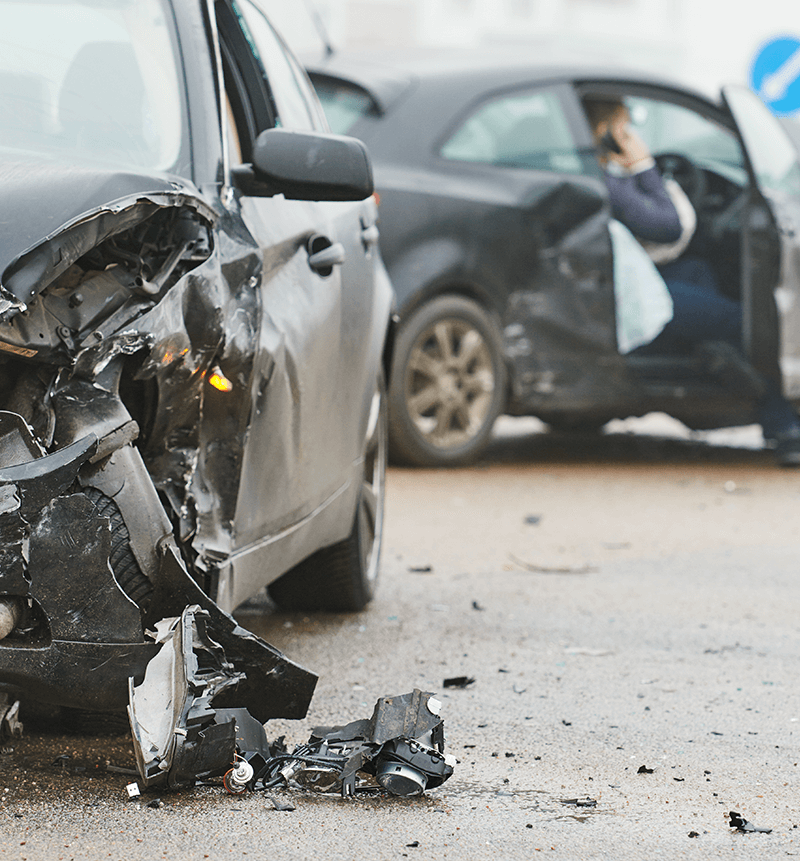
★★★★★
We absolutely can’t thank you enough.
Powers & Santola was so knowledgeable and caring. I was so very fortunate to find such a great law firm.
Vehicles roll over in about 3 percent of crashes, but rollover accidents account for more than a third of all car accident deaths, the Insurance Institute for Highway Safety (IIHS) reports. Rollover accidents are significantly more likely to occur in top-heavy vehicles. For example, the IIHS reports that the Ford Excursion is a “very large SUV with a high rollover death rate.”
The strength of a vehicle’s roof has a significant effect on whether passengers can survive a rollover collision. In fact, the National Highway Traffic Safety Administration (NHTSA) reports that roof crush contributes to serious or fatal injuries in 26 percent of rollover accidents.
Several models of Ford vehicles have roofs that may fail to provide sufficient protection. The Ford Explorer and the Ford F-150 are among the vehicles with roof structures alleged to have contributed to deaths.
If you were injured in a rollover accident in a Ford, it is important to determine if the SUV, truck or car had a poor roof design that contributed to your injuries. The product liability lawyers at Powers & Santola, LLP, can help you pursue full and fair compensation for your medical expenses, property loss, income loss, pain and suffering and other losses caused by a defective roof.
Contact our upstate New York law firm now to find out more about how our experienced attorneys can assist you. The consultation is free and there are no strings attached.
Roof Safety Key
to Preventing Injuries
Controversies over the roof design on Ford vehicles date back decades. Both Ford and General Motors were instrumental in leading an industry-wide effort to adopt minimum standards for roof strength in 1971. The companies were acting in response to their vehicle fleets failing the first test that was developed.
Eventually, Standard 216 was adopted, which stipulated that a roof had to be able to withstand force equal to at least 1.5 times the weight of the vehicle. The test to determine if the vehicle met the standard involved slowly applying a minimal load to the roof’s front corner. Other crash test procedures, which may have more accurately mimicked real-world conditions, were not used.
Ford and other industry groups vigorously fought changes to the requirements even though Standard 216 is likely not sufficient to protect occupants.
In 1999, NHTSA issued a final rule related to the testing of aerodynamically sloped roofs and established standards designed to ensure sufficient roof strength to protect motorists. Both the Recreational Vehicle Industry Association (RVIA) and Ford Motor Company petitioned to have the rule amended, claiming NHTSA’s proposed testing procedures were not an accurate measure of roof strength.
Prior to April 1999, NHTSA’s testing procedures resulted in the Ford Taurus and other vehicles with rounded roofs being tested with the test plate positioned too far toward the back of the car’s roof. This meant, among other things, that the roof over the front occupants was not properly tested and the front edge of the test plate and roof might come into contact and allow the plate to penetrate the roof. The updated final rule specified a new primary test procedure with a new positioning for the test plate.
Safety standards were updated again in 2005 and 2009, with the 2009 updates surviving a challenge from the National Truck Equipment Association. Each time, industry groups fought against improving safety despite the clear link between roof strength and surviving a rollover crash.
Questions About Ford Roofs and Safety Testing
Ford made several component redesigns to the Explorer in the 1990s, with a complete redesign occurring in 2002. Its twin, the Mercury Mountaineer, was also redesigned in 2002.
In 1993, for example, engineers expressed concerns in a memorandum reviewing the roof strength of the 1995 Ford Explorer. Engineers recommended reinforcing the B-pillar supporting the Ford Explorer’s roof because it was one of the “weakest points in the structure.” The engineers also recommended the use of high-strength steel over cold-rolled steel in order to strengthen the A pillar. Both the A and B pillars performed poorly in internal crash tests, prompting the memorandum and recommended changes.
Ford did not make the roof stronger and in fact subsequent redesigns actually made the vehicle’s roof weaker. In 1995, the strength-to-weight ratio on Ford Explorers was 1.72 but it had fallen to 1.56 by 1999. This was only slightly above the minimum, prompting company engineers to express more concerns.
Ford’s internal memorandums on roof strength testing have been used in lawsuits against the company, as have additional internal documents in which Ford contended that roof strength was not a critical factor in rollover crashes. This assertion is contrary to evidence.

Roof Crush Lawsuits Against Ford
Victims harmed by Ford’s alleged failure to design safe roofs have taken legal action. Juries in California, Texas and Florida, among others, have awarded millions of dollars in damages to accident victims. As of 2014, more than 1,600 additional lawsuits were pending based on injuries in rollover accidents.
Victims of these crashes suffered permanent injuries such as paralysis, and many people were killed. Such devastating outcomes may have been avoided if Ford had simply made the roofs on its vehicles stronger.
If you or a loved one suffered injury in a rollover accident involving a Ford, contact Powers & Santola, LLP, today. Our attorneys can provide a free review of your case and a consultation about your legal options.
Contact us online now or call us in Albany, Syracuse, or Rochester.
Other Practice Areas
Delayed Cancer
Diagnosis
Surgical
Malpractice
Wrongful
Death
Personal
Injury
Auto
Accidents
Medical
Malpractice
Changing Lives for the Better
When someone injures you, your life gets turned upside down. Suddenly, you may face a ton of medical bills. You may be unable to work or help out around the home. Others may need to care for you around the clock. Nothing is the same.
view all practice areas
2024 Ⓒ Powers & Santola, LLP. All rights reserved. Privacy Policy | Site Map
The information you obtain at this site is not, nor is it intended to be, legal advice. You should consult an attorney for advice regarding your individual situation. We invite you to contact us and welcome your calls, letters and electronic mail. Contacting us does not create an attorney-client relationship. Please do not send any confidential information to us until such time as an attorney-client relationship has been established.